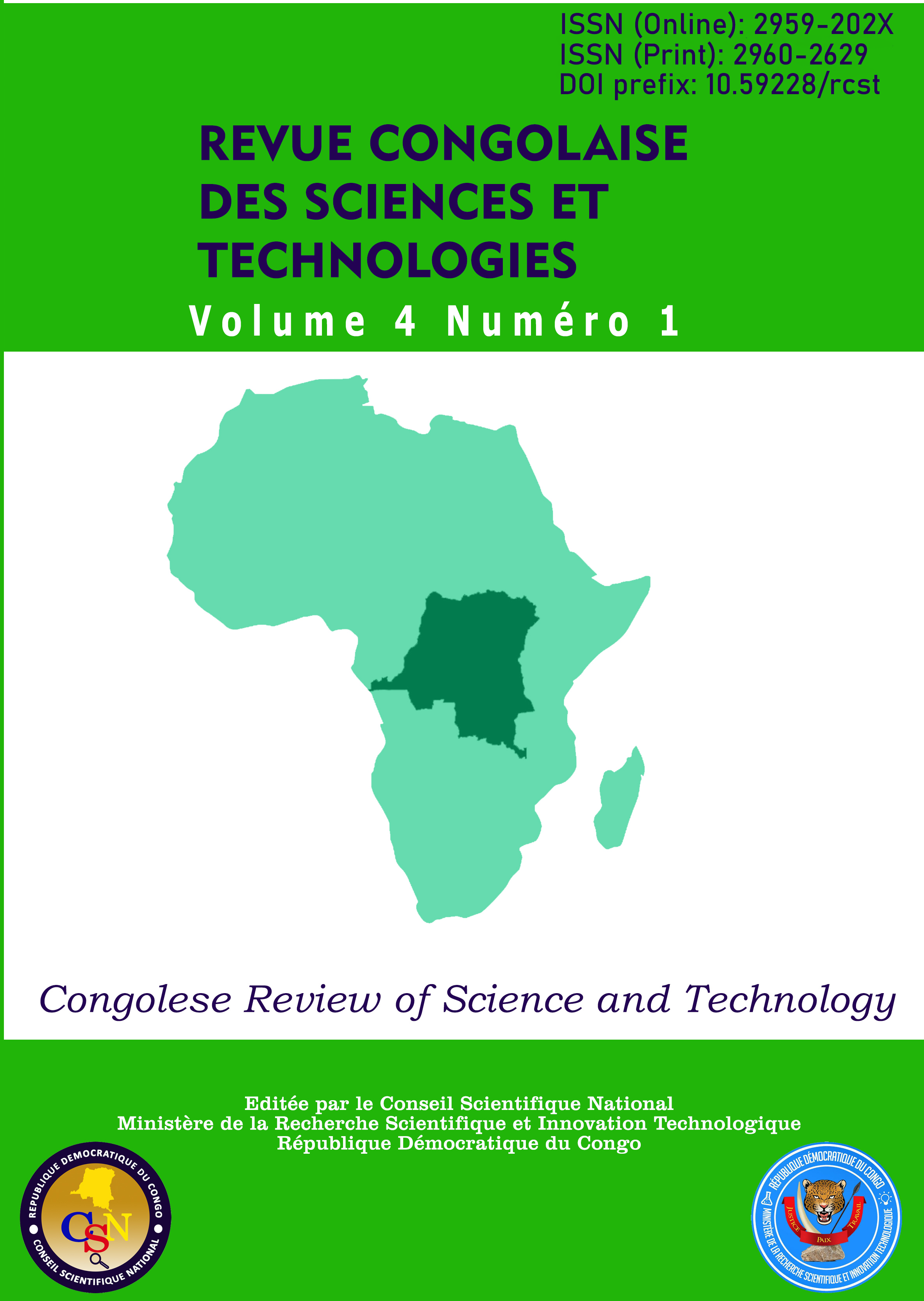Determinants of the recrudescence of acute malnutrition in children aged 6-59 months, study conducted in the Wanierukula/Tshopo rural health zone, Democratic Republic of Congo]
Main Article Content
Abstract
Malnutrition in all its forms continues to affect several regions of the world in general, and certain African countries in particular. In the Democratic Republic of Congo, according to data published in 2023 by the Tshopo Provincial Health Department, more than 1940 cases of recrudescence of malnutrition have been recorded in the city of Tshopo. This descriptive, cross-sectional and quantitative study, based on a structured direct interview using a pre-established questionnaire, was carried out among 777 mothers of children over a three-month period, from September 24 to December 24, 2024. Its aim was to determine the factors most responsible for the resurgence of acute malnutrition in children aged between 6 and 59 months. The results of this study showed that the availability of food on the market, i.e. 79.5%, mothers' age ≥ 25 years, i.e. 68.9%, lack of income-generating activity, i.e. 69.8%, unavailability of financial means, i.e. 68.2%, low monthly household income are determining factors in acute malnutrition among children aged 6 to 59 months in the Wanierukula health zone (p < 0.05 significant at the conventional threshold of 5%). Concrete action must be taken to reduce the rate of malnutrition in the city of Tshopo.
Article Details
Section

This work is licensed under a Creative Commons Attribution-NonCommercial-ShareAlike 4.0 International License.
References
Ajanovic, S., Madewell, Z.J., & El Arifeen. (2024). Neurological Symptoms and Cause of Death Among Young Children in Low- and Middle-Income Countries. JAMA Netw Open, 7(1), e2431512.
Akoto, E.M., & Hill, A. (1998). Morbidité, malnutrition et mortalité des enfants» in population et sociétés en Afrique au sud du Sahara. Paris, Edition Le Harmattan.
Albanus, F.S., & Ashipala, D.O. (2023). Nutritional knowledge and practices of mothers with malnourished children in a regional hospital in Northeast Namibia. J. Public Health Afr. 14(8), 2391-2401.
Black, R.E., Victora, C.G., & Walker, S.P.(2013). Maternal and child undernutrition and overweight in low-income and middle-income countries. The Lancet, 382(51), 427–451.
Dama, U., Tchoffo, D., Onana Akoa, F.A., & Abanda, J.N. (2024). Prévalence de la malnutrition chez les enfants de moins de 5 ans dans les départements du Mayo-Tsanaga et du Logone et Chari, Extrême-Nord, Cameroun. PAMJ-Clinical Medicine , 14(3), 1–10.
Global Nutrition Report. (2018). Available from: https:// globalnutritionreport.org/reports/globa l-nutrition-report-2018/
https://epi-info.software.informer.com/3.4/.
https://www.fao.org/newsroom/detail/drc-fao-sounds-alarm-over-persisting-high-levels-of-hunger/fr.
https://www.unicef.org/drcongo/topics/malnutrition.
Pelletier, D.L., Frongillo, E.A., Schroeder, D.G., & Habicht, J.-P. (1995). The effects of malnutrition on child mortality in developing countries. Bullet. World Health Organization, 73(4), 443–448.
Pelletier, D.L., Frongillo, E.A., Schroeder, D.G., & Habicht, J.-P. (19954). A methodology for estimating the contribution of malnutrition to child mortality in developing countries. J. Nutr, 124 (10), 2106-2122. DOI: 10.1093/jn/124.suppl_10.2106S.
Seid, A., Sseyoum, B.,& Mesfin, F. (2017). Determinants of Acute Malnutrition among Children Aged 6–59 Months in Public Health Facilities of Pastoralist Community, Afar Region, Northeast Ethiopia: A Case Control Study. J. Nutr. Metab, 96(7), 1-7. DOI: 10.1155/2017/7265972
WHO. Levels and trends in child malnutrition: unicef/who/world bank group joint child malnutrition estimates: key findings of the 2023 edition. 2023. Available: https://www.who.int/publications/i/item/ 9789240073791 [Accessed 12 Jun 2024].
Yirga, A.A., Mwambi, H.G., Ayele, D.G., & Melesse, S.F. (2019). Factors affecting child malnutrition in Ethiopia. Afr Health Sci, 19(2), 1897–1909.

